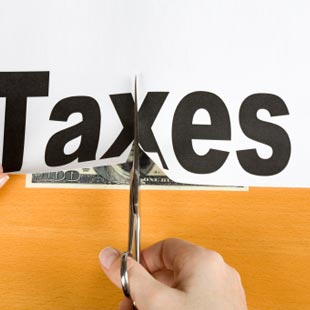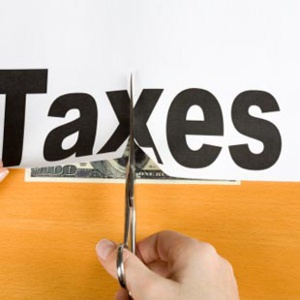Those are the consequences of an intriguing new meeting expectations paper by Owen Zidar for the National Bureau of Economic Research. Zidar, a right hand financial matters teacher at the University of Chicago's Booth School of Business, reasons that assessment changes went for low- and moderate-pay family units have significantly more effective large scale monetary impacts than modifications that focus on the most elevated pay 10 percent.
"By and large, tax reductions for the base 90% have a tendency to result in more yield, vocation, utilization, and venture development than equally estimated tax breaks for the main 10% over a business cycle recurrence."
Zidar examined the two-year impacts of expense changes in the U.S. since 1948 at both state and national levels. He utilized NBER's TAXSIM model to figure the impacts of new assessment law after 1960, the most punctual information accessible for the model. He took a gander at the effect of assessment changes for the most noteworthy pay 10 percent, the top a large portion of, the base 90 percent, and the base half. What's more, he rectified for non-assess approaches, for example, changes in spending.
His outcomes were striking at both the national and state levels. Case in point, a tax break of 1 percent of state Gross Domestic Product (an enormous diminishment) for the base 90 percent of family units helps state vocation by a total 5.1 percent more than two years. In any case, a comparable measured tax break for the main 10 percent brings about no change by any means. For point of view, the Tax Policy Center figures the main 10 percent will make more than $190,000 in extended money salary this year.
Zidar's national level results were very much alike. A 1 percent of GDP tax break went for the base 90 percent of workers expands livelihood by around 5 percent more than 2 years yet the same tax reduction for the main 10 percent brings about a measurably unimportant increment in occupations.
The example is the same for duty expands: When the base 90 percent of family units pay higher expenses, the economy moderates. At the point when the main 10 percent pay all the more, next to no progressions.
His outcomes give arrangement ammo to both progressives and liberals. Moderates will indicate proof that expense changes do, in fact, influence the economy and will contend the benefits of measuring element impacts of those corrections. Progressives will say that Zidar's work braces their case that tax breaks for the rich have little impact on development.
Zidar is tackling an extreme test by attempting to ascertain how assessment changes for individuals at diverse salary levels influence the general economy. Anyway, whatever side of religious assessment isolate you sit, investigate his paper. It will issue you bounty to consider.
References:
http://www.forbes.com/sites/beltway/2015/04/21/tax-cuts-for-low-and-moderate-income-households-may-be-more-powerful-than-cuts-for-the-rich/
http://www.forbes.com/sites/beltway/2015/04/21/tax-cuts-for-low-and-moderate-income-households-may-be-more-powerful-than-cuts-for-the-rich/2/
"By and large, tax reductions for the base 90% have a tendency to result in more yield, vocation, utilization, and venture development than equally estimated tax breaks for the main 10% over a business cycle recurrence."
Zidar examined the two-year impacts of expense changes in the U.S. since 1948 at both state and national levels. He utilized NBER's TAXSIM model to figure the impacts of new assessment law after 1960, the most punctual information accessible for the model. He took a gander at the effect of assessment changes for the most noteworthy pay 10 percent, the top a large portion of, the base 90 percent, and the base half. What's more, he rectified for non-assess approaches, for example, changes in spending.
His outcomes were striking at both the national and state levels. Case in point, a tax break of 1 percent of state Gross Domestic Product (an enormous diminishment) for the base 90 percent of family units helps state vocation by a total 5.1 percent more than two years. In any case, a comparable measured tax break for the main 10 percent brings about no change by any means. For point of view, the Tax Policy Center figures the main 10 percent will make more than $190,000 in extended money salary this year.
Zidar's national level results were very much alike. A 1 percent of GDP tax break went for the base 90 percent of workers expands livelihood by around 5 percent more than 2 years yet the same tax reduction for the main 10 percent brings about a measurably unimportant increment in occupations.
The example is the same for duty expands: When the base 90 percent of family units pay higher expenses, the economy moderates. At the point when the main 10 percent pay all the more, next to no progressions.
His outcomes give arrangement ammo to both progressives and liberals. Moderates will indicate proof that expense changes do, in fact, influence the economy and will contend the benefits of measuring element impacts of those corrections. Progressives will say that Zidar's work braces their case that tax breaks for the rich have little impact on development.
Zidar is tackling an extreme test by attempting to ascertain how assessment changes for individuals at diverse salary levels influence the general economy. Anyway, whatever side of religious assessment isolate you sit, investigate his paper. It will issue you bounty to consider.
References:
http://www.forbes.com/sites/beltway/2015/04/21/tax-cuts-for-low-and-moderate-income-households-may-be-more-powerful-than-cuts-for-the-rich/
http://www.forbes.com/sites/beltway/2015/04/21/tax-cuts-for-low-and-moderate-income-households-may-be-more-powerful-than-cuts-for-the-rich/2/


 Tax Cuts – The Rich And Poor Of It
Tax Cuts – The Rich And Poor Of It





 Companies
Companies